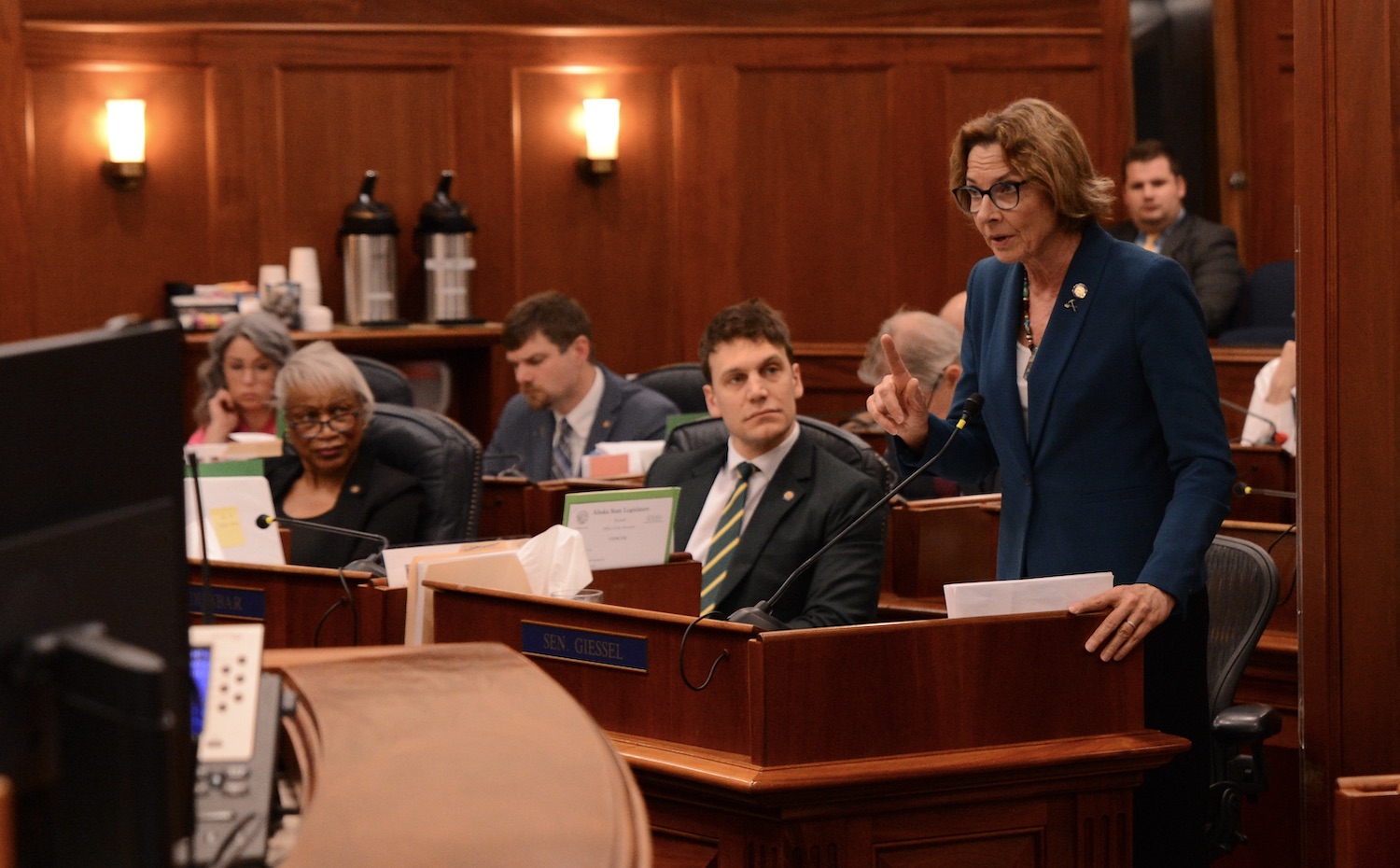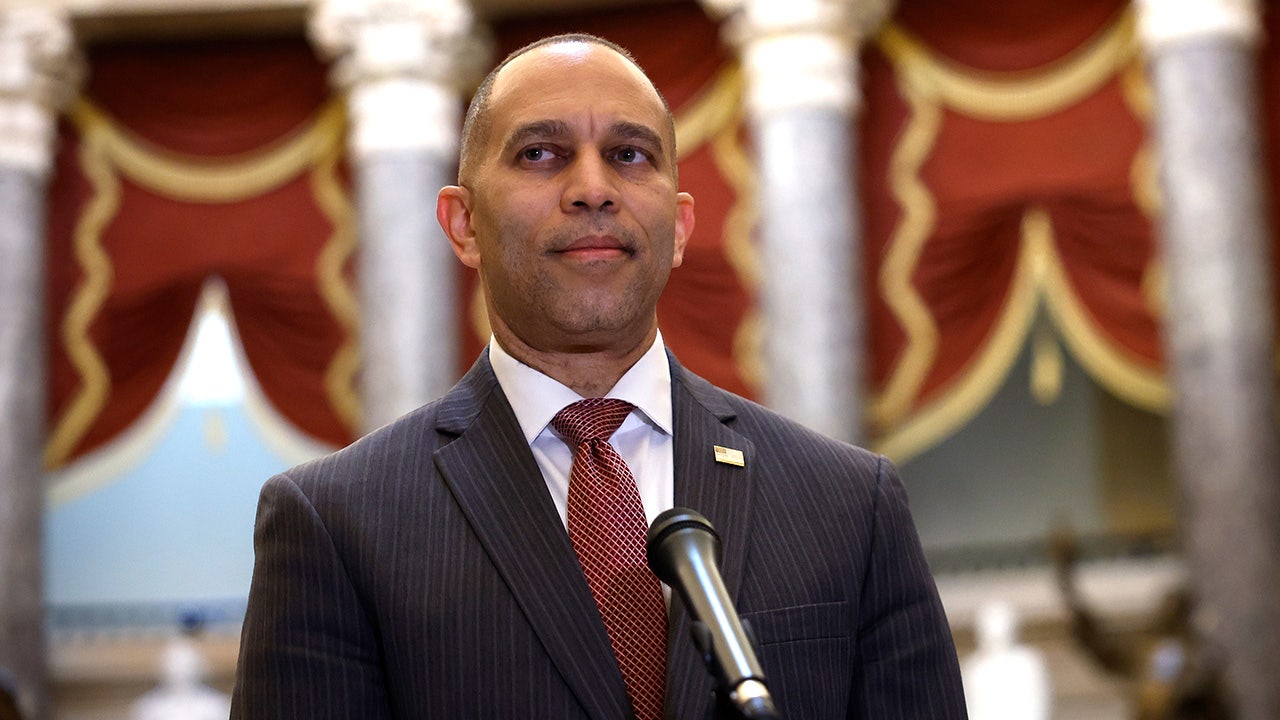It’s been an unusual flu season so far in Alaska, said the state’s top epidemiologist: The respiratory illness arrived early, weeks before the rest of the country, and cases are now declining across most of Alaska.
However, RSV cases are on the rise, and Alaska is reporting particularly low vaccination rates for the three illnesses that typically send hundreds of Alaskans to the hospital each year — flu, COVID-19 and RSV, said Dr. Joe McLaughlin, Alaska’s state epidemiologist.
By early December, fewer than one in five Alaskans had gotten a flu shot and just 13% of eligible Alaskans were up-to-date on their COVID-19 vaccinations, according to a public health alert sent out by the state on Dec. 18 describing the urgency surrounding low immunization rates.
“I’m always concerned about vaccination rates,” McLaughlin said Friday, noting that Alaska often has one of the lower vaccination rates in the country for flu and other illnesses. “This year, our coverage rates are below even what they have been in recent years.”
McLaughlin said it’s too soon to tell whether this year’s new protections against respiratory syncytial virus, or RSV for short — which include a vaccine for older adults and pregnant people, and a new monoclonal antibody for infants — are making a mark on the state’s cases.
Parents of young children have been struggling to access that new RSV monoclonal antibody for infants, called nirsevimab, both in Alaska and nationwide, due to demand far outpacing supply, McLaughlin said.
Here’s where things stand right now with the three big “winter” viruses in Alaska:
Flu
In Alaska, flu typically peaks around December and January. This year, cases began rising in late September and started falling in mid-November, well ahead of schedule and just as cases in the Lower 48 began taking off.
Flu is a viral infection that attacks the respiratory system, the nose, throat, bronchial tubes and lungs.
[US flu and COVID infections are rising and could get worse over the holidays, CDC says]
“Alaska had the highest rates of influenza in the nation early on, and then our rates have been declining since that peak, but the rest of the nation for the most part has been on an increase,” McLaughlin said.
During the second week of December, there were just 70 lab-confirmed influenza cases reported in Alaska — well below a peak of 775 cases reported in the state during the first week of November.
McLaughlin said it was a bit of a mystery why Alaska’s flu season came so early this year. Anna Frick, another epidemiologist with the state, previously said it might have to do with the cold, wet weather this fall that kept people inside more.
:quality(70)/cloudfront-us-east-1.images.arcpublishing.com/adn/OU25BOW36ZB2LOH7VVMQXWBY6U.jpg)
Despite the recent decline in cases, McLaughlin said Alaskans aren’t out of the woods yet when it comes to flu: A post-holiday spike in cases is still possible.
He said it’s not too late for Alaskans to get their flu shots, which can prevent more serious illness from the virus, especially in young children, older adults and those with chronic illnesses who are especially vulnerable.
Each year, between five and 10 Alaskans typically die from the flu, McLaughlin said. So far this year, at least six have died, he said.
“Influenza is always such a tricky virus to predict in terms of what’s going to happen from week to week,” McLaughlin said. “You can have an early spike that goes down and then spikes right up again.”
RSV
RSV is is another common respiratory virus that typically causes mild, cold-like symptoms. It can sometimes be serious, especially for infants and older adults.
Last year, the illness sent hundreds of young children in Alaska and nationwide to the hospital, packing pediatric units in hospitals around the state.
This year, two new RSV vaccines for older adults, and a new monoclonal antibody treatment that protects infants and young children from the illness, are available as an added form of protection.
State health officials said earlier this year that they’re hopeful the newly approved RSV protections would mean significantly fewer hospitalizations in the state, and encouraged higher-risk Alaskans to talk to their doctors about their options.
But McLaughlin said Friday it’s too soon to tell whether the new vaccines are having a noticeable impact on the state’s cases, which are currently on the rise across the state, particularly in Juneau and other parts of Southeast Alaska.
:quality(70)/cloudfront-us-east-1.images.arcpublishing.com/adn/MWNNT5PTHBCGBCM5LTSNBWW5EE.jpg)
He noted that a national shortage of nirsevimab — the RSV-protecting monoclonal antibody for infants — is impacting providers in Alaska, and that parents might need to call around to a few different providers to find one with the drug in stock.
The state this week sent out an alert to providers asking clinics with surpluses of the drug to consider distributing it to higher-need providers who are out, he said.
COVID-19
Unfortunately, COVID-19 is still sickening Alaskans too, McLaughlin said. Yet another omicron variant, JN.1, is driving a recent increase in cases statewide, and McLaughlin said the virus is still sending Alaskans to the hospital.
“I think a lot of people just don’t realize that there still is a lot of COVID-19 activity, and still a lot of hospitalizations from it,” he said.
While the state no longer updates its COVID-19 dashboard, data from the federal Centers for Disease Control and Prevention showed 21 new COVID-19 hospital admissions in the state over the week ending with Dec. 16. A weekly bulletin sent out by the state tracks influenza-like illnesses in hospitals in Alaska.
Few Alaskans have gotten the latest booster shot, which McLaughlin said can be really helpful at preventing illness from a virus that is still hospitalizing Americans at a rate far higher than either flu or RSV.
“Immunity against COVID-19 wanes over time,” he said. “That’s true if you’ve vaccinated before, and true if you’ve been infected in the past.”

:quality(70)/cloudfront-us-east-1.images.arcpublishing.com/adn/4KHRC53CRFD2TNOCMLVF3CLXKI.jpg)







:quality(70)/cloudfront-us-east-1.images.arcpublishing.com/adn/LJ7MFWVFDNFMZOWCLIRZBOQ73Q.jpg)






















